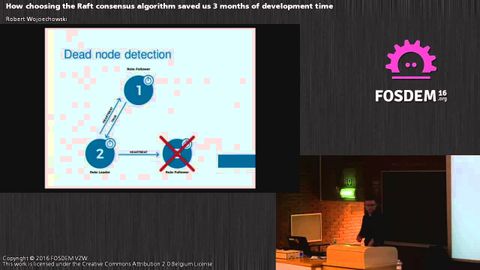
字幕と単語
FOSDEM 2016に参加しました。ラフトコンセサスアルゴリズムを選ぶ理由 (FOSDEM 2016: Why we choose the Raft consesus algorithm)
00
July が 2021 年 01 月 14 日 に投稿保存
動画の中の単語
time
US /taɪm/
・
UK /taɪm/
- n. (u.)(音楽の)拍子 : テンポ;(時計が指し示す)時刻 : 時間;時間;(ある出来事が起きる)時 : 時点;時;時代 : 時期;時間;所要時間
- v.t.(音楽の)リズムをとる;(~するのに)ふさわしい時を選ぶ;時間を計る;(出来事の最適な時間や時期を)決める
A1 初級TOEIC
もっと見る number
US /ˈnʌmbɚ/
・
UK /ˈnʌmbə(r)/
- n. (c./u.)数字;一曲、演目;総数
- v.t.番号をつける;配置する;(集団やシリーズなどの)一員だと公表する
A1 初級TOEIC
もっと見る start
US /stɑrt/
・
UK /stɑ:t/
- n. (c./u.)開始時刻 : 開始場所 : 開始;開始場所:開始時刻;始まり;はっとすること
- v.t./i.始める : 始まる
- v.t.(機器などを)起動する
A1 初級
もっと見る エネルギーを使用
すべての単語を解除
発音・解説・フィルター機能を解除
